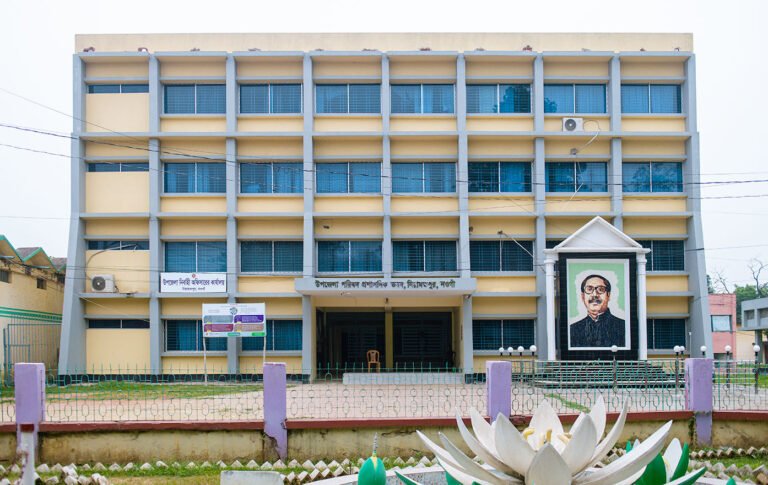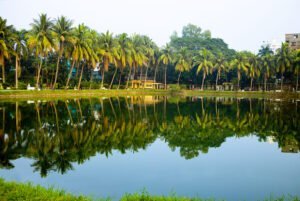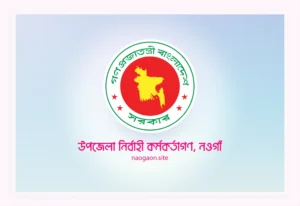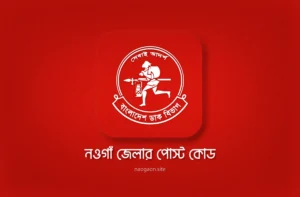Learn About Naogaon’s Population And Its Statistics
Located in the northern part of Bangladesh, Naogaon district is home to a diverse population. This article will provide a comprehensive look at Naogaon’s demographic data, complete with charts, statistics, and other facts. Furthermore, the data is broken down from various perspectives to make it easily understandable for everyone.
Whether you’re a resident, a policy-maker, or simply interested in the demographics of Naogaon, this post provides valuable insights into the district’s diverse population structure.
Total Population in Naogaon District
As per the 2022 census, the population of Naogaon district is as follows:1
- Total Population: 2,784,598 people
- Male: 1,374,312 people
- Female: 1,408,840 people
- Hijra: 173 people
- Sex Ratio: 97.55 males for every 100 females
- Annual Population Growth rate: 0.61%
- Population Density: 810 km²
As of the 2022 census (see footnote), Naogaon district has a total population of 2,784,598. The population consists of 1,374,312 males, 1,408,840 females, and 173 hijras (third gender). The gender ratio in the district is 97.55, meaning there are 97.55 males for every 100 females. This data suggests that the district is not male-biased but slightly female.
Historical Population of Naogaon District 1981-2022
Upazila-wise Population
Upazila-wise Population Growth Rate
| Upazila | Total Growth Rate (%) | Male Growth Rate (%) | Female Growth Rate (%) |
|---|---|---|---|
| Atrai | 0.37% | 0.09% | 0.63% |
| Badalgachhi | 0.23% | 0.02% | 0.43% |
| Dhamoirhat | 0.44% | 0.34% | 0.54% |
| Mohadevpur | 0.47% | 0.37% | 0.56% |
| Manda | 0.40% | 0.26% | 0.54% |
| Naogaon Sadar | 0.89% | 0.72% | 1.07% |
| Niamatpur | 0.76% | 0.81% | 0.70% |
| Patnitala | 0.69% | 0.61% | 0.78% |
| Porsha | 0.95% | 1.04% | 0.86% |
| Raninagar | 0.35% | 0.19% | 0.50% |
| Sapahar | 1.18% | 1.14% | 1.22% |
| Naogaon District Average | 0.61% | 0.50% | 0.72% |
The table shows the average annual population growth rates in different upazilas of Naogaon District in 2022.
- Sapahar has the highest total growth rate at 1.18%, followed by Porsha (0.95%) and Naogaon Sadar (0.89%).
- Badalgachhi (0.23%) has the lowest growth rate among all upazilas.
- In most upazilas, the female population is growing faster than the male population.
- Niamatpur is an exception, where the male growth rate (0.81%) is slightly higher than the female growth rate (0.70%).
- The district’s average growth rate is 0.61%, with males at 0.50% and females at 0.72%.
Ethnic Population in Naogaon
- Total Ethnic Population: 107,292
- Male: 53,248
- Female: 54,044
- Percentage of District’s Total Ethnic Population: 6.50%
In Naogaon District, Adivasis, also known as the indigenous peoples (Bangla: আদিবাসী), make up 6.50% of the total population.3 They are identified as Adivasi. The Santal, Oraon, Pahan, Mahali, and Munda are the principal ethnic groups. They also maintain distinct cultural identities, each with its own language and religious traditions. These native groups have given multi-dimensionality to the culture of the district through their customs and diversity of lifestyle.
Ethnic Population Gender Ratio in Naogaon
Total Ethnic Population Gender Ratio in Naogaon district
- Male: 50.86%
- Female: 49.14%
- Total: 100.00%
Marial Status
Below is a detailed married, unmarried, and total male and female population aged 10 years and above in Naogaon district. This information is based on 2011 census and sourced from District Statistics 2011 Naogaon.
Upazila-wise Percentage Married Population (10 Years and Above)
| Upazila | Male Married (%) | Female Married (%) |
|---|---|---|
| Atrai | 66.6% | 71.1% |
| Badalgachhi | 67.8% | 70.9% |
| Dhamoirhat | 68.4% | 71.8% |
| Manda | 68.8% | 71.1% |
| Mohadevpur | 68.1% | 70.8% |
| Naogaon Sadar | 64.8% | 69.1% |
| Niamatpur | 68.3% | 68.5% |
| Patnitala | 68.5% | 71.1% |
| Porsha | 65.3% | 67.6% |
| Raninagar | 66.9% | 70.4% |
| Sapahar | 65.9% | 69.4% |
As of the 2011 census, this table provides a comparison of the percentage of married males and females across 11 Upazilas in Naogaon. Female married percentages are generally higher than males. Dhamoirhat Upazila showed 71.8% of married females and Manda Upazila showed 68.8% of males.









